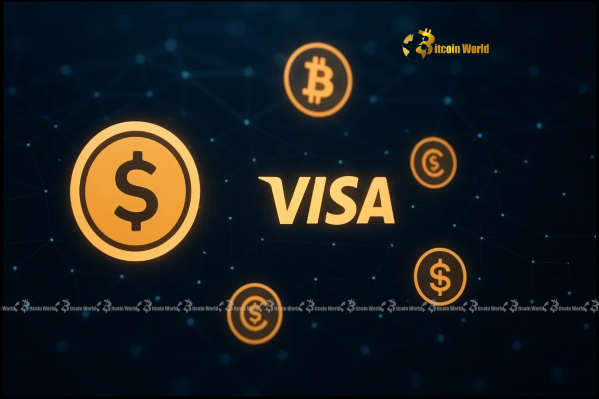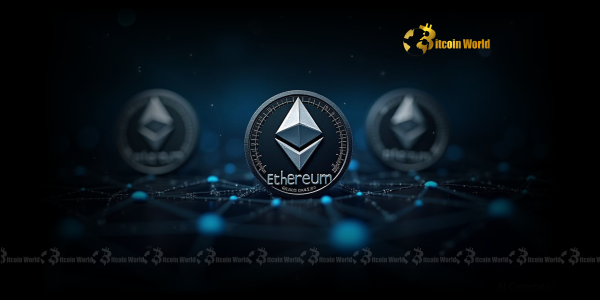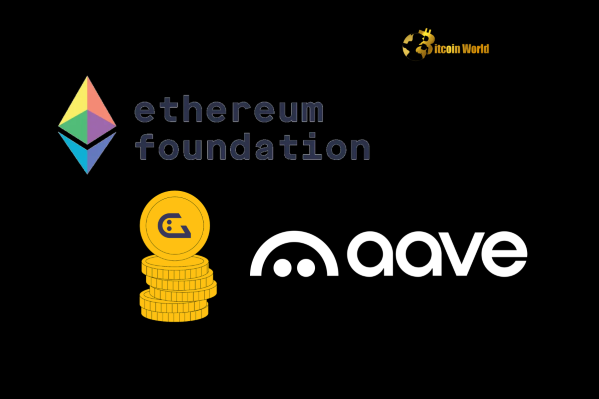BitcoinWorld

Visa Stablecoin Vision: How a Global Payment Giant is Revolutionizing Digital Currency
The world of finance is constantly evolving, and at the forefront of this transformation is the intersection of traditional payment giants and cutting-edge digital assets. Few developments highlight this shift more profoundly than the recent revelations from Visa. Are you ready to see how Visa stablecoin initiatives are set to redefine how we transact globally? This isn’t just about a new payment method; it’s about a fundamental shift in the very infrastructure of global commerce, spearheaded by one of the most recognized brands in the world.
The Unveiling of Visa’s Long-Standing Stablecoin Use Cases
During a recent appearance on CNBC, Ryan McInerney, the astute CEO of global payments powerhouse Visa, dropped a significant revelation: the company has been diligently working on stablecoin use cases for years. This isn’t a spur-of-the-moment decision but the culmination of extensive research and development behind closed doors. McInerney’s statement underscores a strategic, long-term commitment to integrating digital assets into their vast ecosystem.
For a company of Visa’s stature, with its immense reach and influence across billions of consumers and merchants worldwide, such a declaration carries immense weight. It signals a strong belief in the transformative potential of stablecoins, not just as niche crypto assets but as viable instruments for mainstream payments. The timing is particularly noteworthy, coinciding with ongoing efforts in the U.S. to establish clear legislative frameworks for stablecoins. This regulatory clarity is crucial for major players like Visa to move forward with confidence and introduce their innovations to the global stage.
Why Are Stablecoins the Next Frontier for the Payment Network?
The core appeal of stablecoins lies in their promise of stability, bridging the volatility often associated with cryptocurrencies like Bitcoin and Ethereum, with the efficiency of blockchain technology. Unlike traditional fiat currencies, stablecoins leverage the speed and transparency of decentralized networks, offering a compelling alternative for cross-border transactions, remittances, and even everyday purchases.
Visa’s interest in stablecoins stems from several key advantages they offer for their expansive payment network:
- Global Reach and Efficiency: Stablecoins can facilitate near-instant, low-cost cross-border payments, bypassing traditional banking hours and correspondent bank networks. This significantly reduces friction and costs, particularly for international transactions.
- Programmability: Unlike traditional money, stablecoins can be programmed with smart contracts, enabling automated payments, escrow services, and innovative financial products. This opens up new avenues for businesses and consumers alike.
- Interoperability: As digital assets, stablecoins can potentially interact seamlessly with various blockchain networks and decentralized applications, fostering a more interconnected global financial system.
- Reduced Fraud and Enhanced Security: Blockchain technology offers inherent security features, including cryptographic encryption and immutable ledgers, which can enhance the security of transactions and reduce the risk of fraud.
McInerney’s vision extends to scaling stablecoins to “billions of end points” if there is sufficient demand. This isn’t just an aspiration; it reflects Visa’s strategic positioning to be at the forefront of the digital economy, ensuring its network remains relevant and indispensable in an increasingly tokenized world.
The Path to Mainstream Digital Currency Adoption
The journey towards widespread digital currency adoption is complex, involving technological integration, regulatory navigation, and consumer education. Visa’s approach appears to be a measured yet ambitious one, waiting for the right legislative environment to fully unleash its stablecoin capabilities.
Consider the potential impact:
| Aspect | Traditional Payments | Stablecoin Payments (Visa’s Vision) |
|---|---|---|
| Transaction Speed | Hours to days (especially cross-border) | Near-instant (seconds to minutes) |
| Cost per Transaction | Can be high, especially for international transfers | Potentially lower, more transparent fees |
| Global Accessibility | Limited by banking infrastructure | Accessible to anyone with internet and a digital wallet |
| Innovation Potential | Limited by legacy systems | High, through programmability and smart contracts |
This table illustrates the transformative potential. By enabling stablecoins on its network, Visa isn’t just adding another payment option; it’s upgrading its entire infrastructure to be future-proof and more competitive in a rapidly digitizing global economy. The move could also significantly benefit emerging markets, where access to traditional banking services is often limited, but mobile and internet penetration is high.
Navigating Challenges and Embracing Blockchain Innovation
While the prospects are exciting, integrating stablecoins on such a massive scale comes with its own set of challenges. Regulatory uncertainty remains a primary concern, even with progress in the U.S. Legislation needs to be robust enough to protect consumers and prevent illicit activities, yet flexible enough to foster innovation. Visa, with its extensive experience in navigating complex financial regulations worldwide, is uniquely positioned to help shape these discussions.
Another challenge lies in ensuring seamless interoperability between various stablecoin types and blockchain networks. Visa’s role could be to act as a crucial bridge, simplifying the user experience and ensuring that stablecoin payments are as effortless as swiping a credit card today. This commitment to blockchain innovation is not new for Visa; they have previously explored various blockchain-related initiatives, including partnerships with crypto companies and developing their own blockchain-based B2B payment network, B2B Connect.
The potential for scaling stablecoins to “billions of end points” speaks volumes about Visa’s long-term strategy. It’s a testament to their belief that digital assets will play an increasingly vital role in everyday commerce. For consumers, this could mean more choice, faster transactions, and potentially lower fees. For businesses, it opens up new markets and more efficient ways to manage their finances.
What Does This Mean for the Future of Payments?
Visa’s deep dive into stablecoins signals a powerful endorsement from the traditional financial world. It validates the technology and pushes the entire ecosystem closer to mainstream adoption. This move isn’t just about processing transactions; it’s about building the rails for the next generation of digital commerce.
Actionable Insights:
- For Consumers: Keep an eye on Visa’s announcements. As stablecoin integration rolls out, it could offer new ways to pay, save, and send money internationally. Understanding stablecoins will become increasingly relevant.
- For Businesses: Prepare for a future where digital asset payments are commonplace. Explore how stablecoins could streamline your supply chain, cross-border payments, or even customer loyalty programs.
- For Developers & Innovators: Visa’s commitment could spur further development in stablecoin infrastructure, wallet solutions, and decentralized applications. Opportunities for integration and partnership will likely expand.
Conclusion: Visa’s Bold Leap into the Stablecoin Era
Visa’s sustained commitment to stablecoin development, as articulated by CEO Ryan McInerney, marks a pivotal moment for the future of payments. By actively exploring and planning to integrate stablecoins into its vast global network, Visa is not just adapting to the digital age; it is actively shaping it. The vision of enabling stablecoin transactions for billions of users across countless touchpoints is ambitious, yet entirely within Visa’s formidable capabilities.
This strategic pivot underscores the growing inevitability of digital assets in our financial lives. As regulatory clarity emerges and technological advancements continue, Visa’s role in mainstreaming stablecoins could be unparalleled, paving the way for a more efficient, accessible, and innovative global payment landscape. The future of money is digital, and Visa is clearly positioning itself to lead the charge.
To learn more about the latest crypto market trends, explore our article on key developments shaping digital currency institutional adoption.
This post Visa Stablecoin Vision: How a Global Payment Giant is Revolutionizing Digital Currency first appeared on BitcoinWorld and is written by Editorial Team





